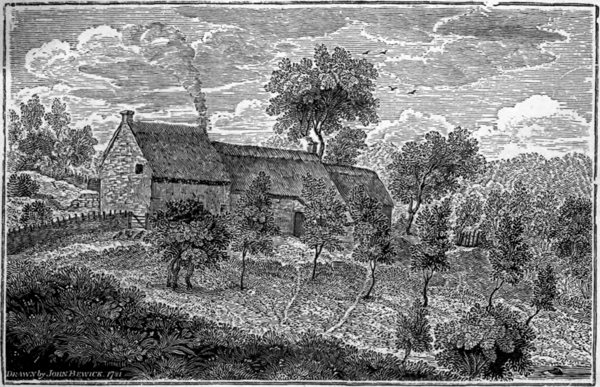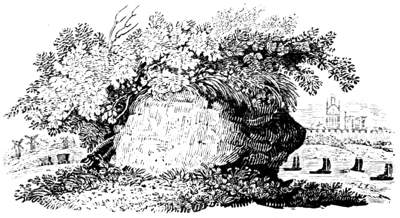

Drawn by John Bewick, 1781
CHERRYBURN.
A
MEMOIR
OF
THOMAS BEWICK,

“While speaking of the English school, I must not omit to noticea truly original genius, who, though not a painter, was an artist ofthe highest order in his way—Thomas Bewick, the admirable designerand engraver on wood. His works, indeed, are of the smallest dimensions,but this makes it only the more surprising that so much interestcould be comprised within such little spaces. The wood cuts thatillustrate his books of natural history may be studied with advantageby the most ambitious votary of the highest classes of art—filled asthey are by the truest feeling for nature, and though often representingthe most ordinary objects, yet never, in a single instance, degeneratinginto common-place. The charming vignettes that ornamentthese books abound in incidents from real life, diversified by genuinehumour, as well as by the truest pathos—of which the single figureof a shipwrecked sailor saying his prayers on a rock, with the wavesrising round him, is an instance. There is often in these littlethings a deep meaning that places his art on a level with styles whichthe world is apt to consider as greatly above it, in proof of which Iwould mention the party of boys playing at soldiers among graves,and mounted on a row of upright tombstones for horses; while forquaint humour, extracted from a very simple source, may be noticed aprocession of geese which have just waddled through a stream, whiletheir line of march is continued by a row of stepping-stones. Thestudent of landscape can never consult the works of Bewick withoutimprovement. The backgrounds to the figures of his Quadrupeds andhis Birds, and his vignettes, have a charm of nature quite his own.He gives us, in these, every season of the year; and his trees, whetherin the clothing of summer, or in the nakedness of winter, are